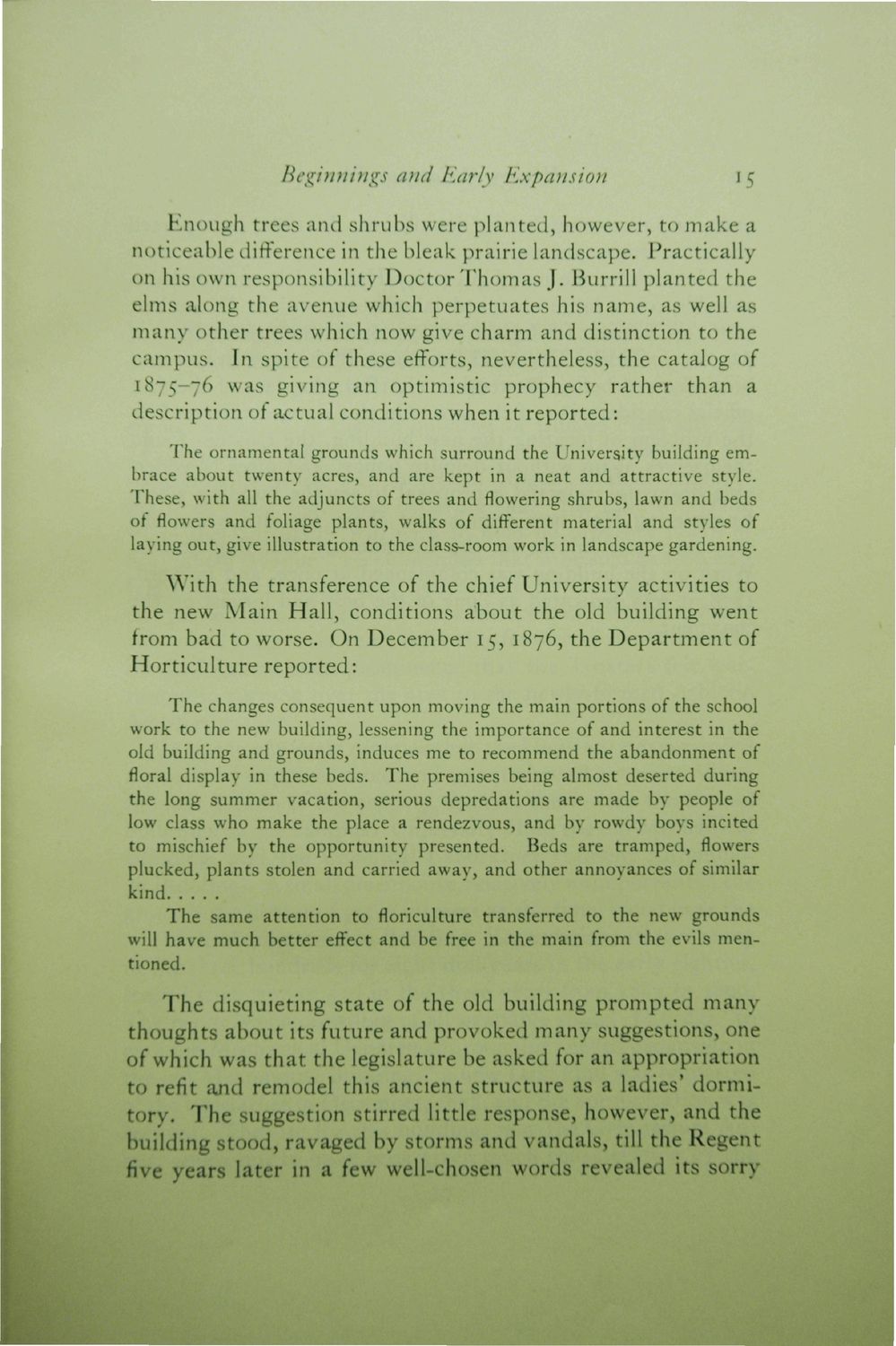| |
| |
Caption: Book - 30 Year Master Plan (Tilton & O'Donnell)
This is a reduced-resolution page image for fast online browsing.

EXTRACTED TEXT FROM PAGE:
Beginnings and Early Expansion 15 Enough trees and shrubs were planted, however, to make a noticeable difference in the bleak prairie landscape. Practically on his own responsibility Doctor Thomas J- Burrill planted the elms along the avenue which perpetuates his name, as well as m a n y other trees which now give charm and distinction to the campus* In spite of these efforts, nevertheless, the catalog of 1875—76 was giving an optimistic prophecy rather than a description of actual conditions when it reported: The ornamental grounds which surround the University building embrace about twenty acres, and are kept in a neat and attractive style. These, with all the adjuncts of trees andfloweringshrubs, lawn and beds of flowers and foliage plants, walks of different material and styles of laying out, give illustration to the class-room work in landscape gardening. With the transference of the chief University activities to the new Main Hall, conditions a'bout the old building went from bad to worse. On December 15, 1876, the Department of Horticulture reported: The changes consequent upon moving the main portions of the school work to the new building, lessening the importance of and interest in the old building and grounds, induces me to recommend the abandonment of floral display in these beds. The premises being almost deserted during the long summer vacation, serious depredations are made by people of low class who make the place a rendezvous, and by rowdy boys incited to mischief by the opportunity presented. Beds are tramped, flowers plucked, plants stolen and carried away, and other annoyances of similar kind The same attention to floriculture transferred to the new grounds will have much better effect and be free in the main from the evils mentioned. T h e disquieting state of the old building prompted m a n y thoughts about its future and provoked many suggestions, one of which was t h a t the legislature be asked for an appropriation to refit and remodel this ancient structure as a ladies* dormitory. T h e suggestion stirred little response, however, and the building stood, ravaged by storms and vandals, till the Regent five years later in a few well-chosen words revealed its sorry
| |